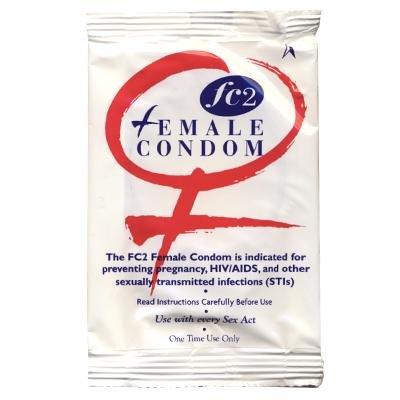Female condoms: Pricey but cheaper than the alternative
The FC2 female condom.
WASHINGTON, D.C. — A few weeks ago as I stood outside of a Metro station in Anacostia, a woman approached the HIV outreach worker I was with for a very particular prophylactic.
“You got any of them female condoms?” the woman asked.
My curiosity piqued. Since when did female condoms become a thing? I thought they were rare, uncomfortable, and costly. Admittedly, I knew close to zero about the contraceptive.
It turns out female condoms are rather expensive but as a recent study shows, the investment by public health departments is worth preventing the alternative — the cost of treating HIV infections over the course of a lifetime.
In 2010, D.C. public health authorities partnered with the Female Health Company, CVS/Caremark and the Washington AIDS Partnership to launch a campaign that aimed to give out 500,000 FC2 female condoms to women in neighborhoods with high rates of HIV.
A cost-effectiveness study by published yesterday by Johns Hopkins University in the journal AIDS & Behavior found that it cost $414,000 to distribute the first 200,000 condoms. That breaks down to about $3.19 per condom used during sex — when factoring in the cost of educational programming included in the campaign.
That sounds expensive on a per-unit basis, but the program prevented an estimated 23 infections, which is about $18,000 per person spared from HIV. The savings are considered efficient because it can cost upwards of $367,000 for a lifetime of HIV medical care.
So for every dollar spent by the campaign, there was a cost savings of roughly $20 — “a highly productive use” of public health dollars according to the authors of the study.
Generally speaking, the female condom is still pretty unfamiliar to most people. But in D.C. where it has been widely distributed, qualitative assessments show women are enjoying the empowerment provided to them when using a FC2.
“It has given some women, especially HIV-positive women, a sense of rediscovery of their sexual life,” said Michael Kharfen, an outreach bureau chief at the D.C. HIV/AIDS, Hepatitis, STD, and TB Administration.
Female condoms provide another choice for women and men in their sexual health. And as of right now, the female condom is the only barrier device that women can use to protect against HIV and sexually transmitted diseases.
The World is an independent newsroom. We’re not funded by billionaires; instead, we rely on readers and listeners like you. As a listener, you’re a crucial part of our team and our global community. Your support is vital to running our nonprofit newsroom, and we can’t do this work without you. Will you support The World with a gift today? Donations made between now and Dec. 31 will be matched 1:1. Thanks for investing in our work!
